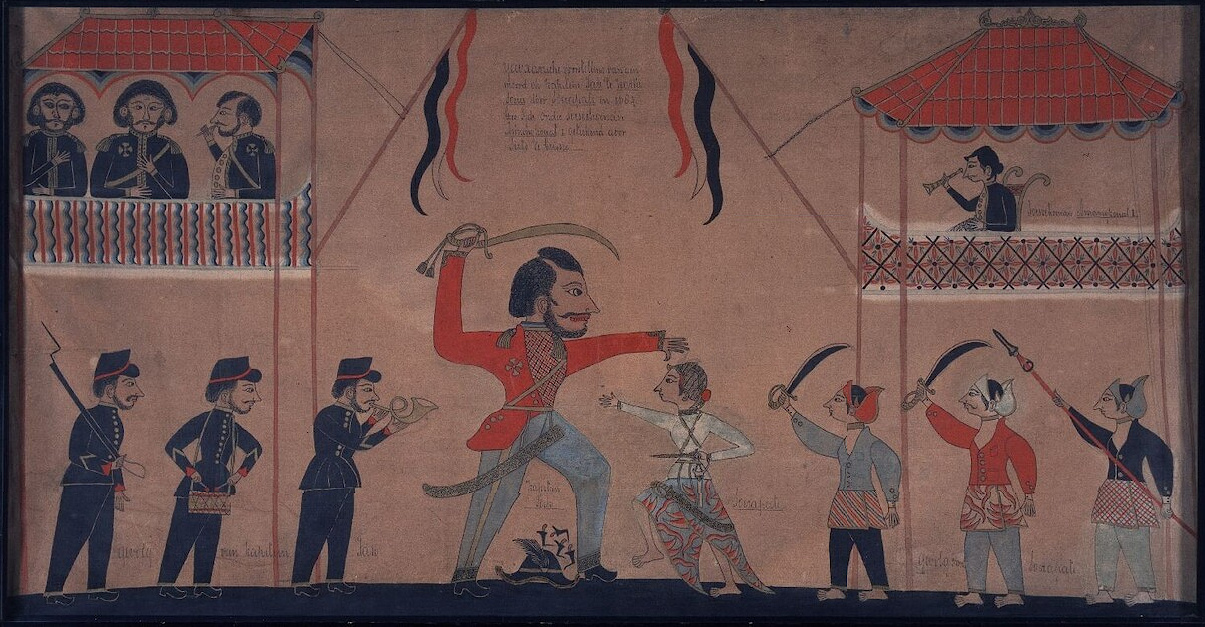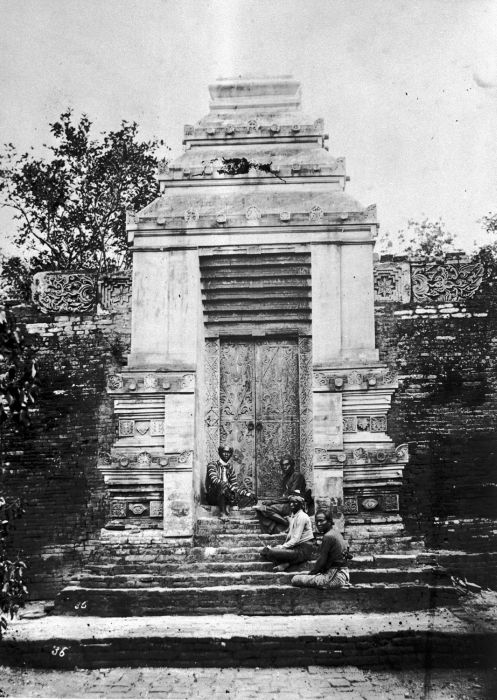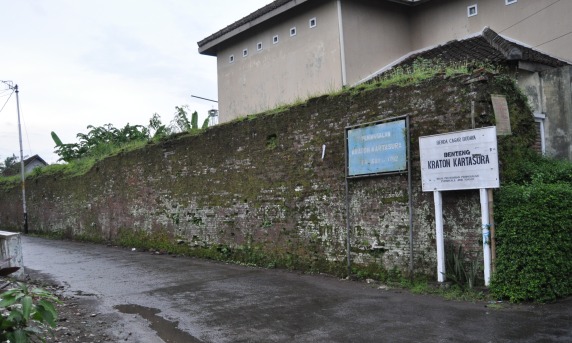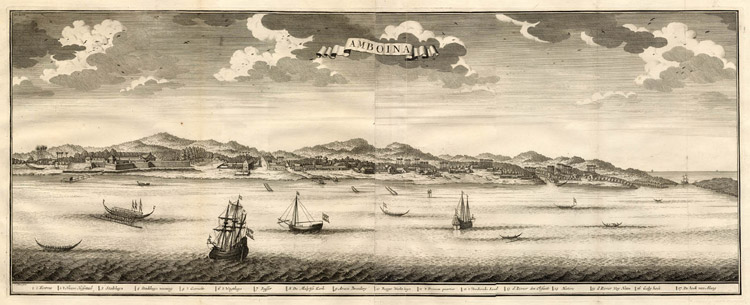|
François Tack
François Tack (c. 1650 – 8 February 1686) was a Dutch East India Company (VOC) officer. Ranked captain at the time of his death, he was one of the VOC's main commanders during the 1678 Kediri campaign against Trunajaya and participated in the city's assault. He was later killed during a brawl at the court of Mataram in Kartasura on 8 February 1686, where he was sent on a diplomatic mission. See also * Anthonio Hurdt, the overall VOC commander of the Kediri campaign. * Isaac de Saint-Martin Isaac de l'Ostal de Saint-Martin (or Lostal) (c. 1629 – 14 April 1696) was a French chevalier, who came in an unknown year from the Béarn to the Dutch Republic. Life In 1657 he left for Batavia, after a training in the Dutch States Army, ... References Bibliography * * * {{Authority control Dutch East India Company people 1686 deaths Year of birth uncertain ... [...More Info...] [...Related Items...] OR: [Wikipedia] [Google] [Baidu] |
Dutch East India Company
The United East India Company ( nl, Verenigde Oostindische Compagnie, the VOC) was a chartered company established on the 20th March 1602 by the States General of the Netherlands amalgamating existing companies into the first joint-stock company in the world, granting it a 21-year monopoly to carry out trade activities in Asia. Shares in the company could be bought by any resident of the United Provinces and then subsequently bought and sold in open-air secondary markets (one of which became the Amsterdam Stock Exchange). It is sometimes considered to have been the first multinational corporation. It was a powerful company, possessing quasi-governmental powers, including the ability to wage war, imprison and execute convicts, negotiate treaties, strike its own coins, and establish colonies. They are also known for their international slave trade. Statistically, the VOC eclipsed all of its rivals in the Asia trade. Between 1602 and 1796 the VOC sent almost a million Eur ... [...More Info...] [...Related Items...] OR: [Wikipedia] [Google] [Baidu] |
Kediri Campaign (1678)
In a campaign that took place from August to December 1678 in Kediri (in modern-day East Java, Indonesia) during the Trunajaya rebellion, the forces of the Mataram Sultanate, led by Amangkurat II, and the Dutch East India Company (VOC), led by Anthonio Hurdt, marched inland into eastern Java against Trunajaya's forces. After a series of marches beset by logistical difficulties and harassment by Trunajaya's forces, the Mataram–VOC army crossed the Brantas River on the night of 16–17 November. They then marched on Trunajaya's capital and stronghold at Kediri and took it by direct assault on 25 November. Kediri was plundered by the Dutch and Javanese victors, and the Mataram treasury—captured by Trunajaya after his victory at Plered—was completely lost in the looting. Trunajaya himself fled Kediri and continued his greatly weakened rebellion until his capture at the end of 1679. During the march to Kediri, the Mataram–VOC army purposefully split itself into three columns ... [...More Info...] [...Related Items...] OR: [Wikipedia] [Google] [Baidu] |
Trunajaya
Trunajaya (Madurese) or Tronajâyâ, also known as Panembahan Maduretno (1649 – 2 January 1680), was a prince and warlord from Arosbaya, Bangkalan, Madura, known for leading the Trunajaya rebellion (1674–1681) against the rulers of the Mataram Sultanate on the island of Java. Rebellion Trunajaya was born in Madura. In 1674 he led a revolt against Amangkurat I and Amangkurat II of Mataram. He was supported by itinerant fighters from Makassar led by Karaeng Galesong. The Trunajaya rebellion moved swiftly and gained momentum, and captured the Mataram court at Plered in mid-1677. The Mataram king, Amangkurat I, escaped to the north coast with his eldest son, the future king Amangkurat II, leaving his younger son ''Pangeran'' (Prince) Puger in Mataram. Apparently more interested in profit and revenge than in running a struggling empire, the rebel Trunajaya looted the court and withdrew to his stronghold in Kediri, East Java, leaving Prince Puger in control of a weak court. ... [...More Info...] [...Related Items...] OR: [Wikipedia] [Google] [Baidu] |
Mataram Sultanate
The Sultanate of Mataram () was the last major independent Javanese kingdom on the island of Java before it was colonised by the Dutch. It was the dominant political force radiating from the interior of Central Java from the late 16th century until the beginning of the 18th century. Mataram reached its peak of power during the reign of Sultan Agung Anyokrokusumo (), and began to decline after his death in 1645. By the mid-18th century, Mataram lost both power and territory to the Dutch East India Company (Dutch: ''Vereenigde Oost-Indische Compagnie''; ''VOC''). It had become a vassal state of the company by 1749. Etymology The name ''Mataram'' itself was never the official name of any polity, as the Javanese often refer to their realm simply as ''Bhumi Jawa'' or ''Tanah Jawi'' ("Land of Java"). ''Mataram'' refers to the historical areas of plains south of Mount Merapi around present-day Muntilan, Sleman, Yogyakarta, and Prambanan. More precisely, it refers to the Kota Gede ... [...More Info...] [...Related Items...] OR: [Wikipedia] [Google] [Baidu] |
Kartasura
Kartasura ( jv, ꦏꦂꦠꦱꦸꦫ, also spelled Kartosuro) is a district ''(kecamatan)'' in Sukoharjo Regency, Central Java, Indonesia. Kartasura is considered as a Surakarta's satellite city, and a junction of highways to Yogyakarta and Semarang. It can be reached within minutes southward of Surakarta's Adisumarmo International Airport. History In the seventeenth century Kartasura was the capital of the Sultanate of Mataram between 1680 and 1755. It is commonly referred to as the Kartasura era or period of the Mataram sultanate—it preceded the transfer to Surakarta by Pakubuwana II. There were considerable problems for the sultanate in this era: * A difficult relationship with the Dutch East India Company (VOC) * The issues of succession, such as Treaty of Giyanti (1755) * The ''Geger Pecinan'', Chinese rebellion which burnt the palace (1743) Heritage sites There are 2 palace sites, Kartasura Palace at Kartasura subdistrict (''kelurahan'') and Pajang The Kingdom ... [...More Info...] [...Related Items...] OR: [Wikipedia] [Google] [Baidu] |
Anthonio Hurdt
Anthonio Hurdt ( – 1689; also spelt Anthony Hurdt and Anthonij Hurt) was a Dutch East India Company (VOC) officer active in what is now Indonesia in the seventeenth century. He was initially assigned in civilian positions in Eastern Indonesia, the latest of which was the VOC Governor of Ambon. He was then posted to Java—in Western Indonesia—to lead the Kediri campaign (also known as the Hurdt expedition) against Trunajaya. After a protracted march slowed by logistical challenges, VOC and its ally Mataram overran Trunajaya and took his stronghold and court at Kediri, 25 November 1678. After the campaign he served in Batavia, becoming Director-General of the VOC in the Indies from 1684 to 1687, when he was expelled due to a dispute with Governor-General Joannes Camphuys. Career Eastern Indonesia Hurdt spent his initial career in the eastern part of what is now Indonesia. VOC records show he arrived in Batavia on 22 July 1652. He was then posted to Ambon to serve as se ... [...More Info...] [...Related Items...] OR: [Wikipedia] [Google] [Baidu] |
Isaac De Saint-Martin
Isaac de l'Ostal de Saint-Martin (or Lostal) (c. 1629 – 14 April 1696) was a French chevalier, who came in an unknown year from the Béarn to the Dutch Republic. Life In 1657 he left for Batavia, after a training in the Dutch States Army, together with Hendrik van Rheede and Johan Bax van Herentals, who was appointed as governor of the Cape Colony. Till 1672 he was stationed on Ceylon and the Dutch Malabar. He served under Admiral Rijcklof van Goens in campaigns against the Portuguese on the west coast of India. He was then appointed in Batavia because of the Franco-Dutch War. Lostal fought against the sultans in Mataram (Java), Ternate and Bantam and seems to have been a skillful soldier. His adventures were used in a playwright by Onno Zwier van Haren. Lostal lived in Utrecht from 1683 with his comagnon Hendrik van Rheede, a naturalist. Like Van Rheede Lostal was interested in botany and a friend of Joan Huydecoper, an Amsterdam burgomaster and one of the managers ... [...More Info...] [...Related Items...] OR: [Wikipedia] [Google] [Baidu] |
Dutch East India Company People
Dutch commonly refers to: * Something of, from, or related to the Netherlands * Dutch people () * Dutch language () Dutch may also refer to: Places * Dutch, West Virginia, a community in the United States * Pennsylvania Dutch Country People Ethnic groups * Germanic peoples, the original meaning of the term ''Dutch'' in English ** Pennsylvania Dutch, a group of early Germanic immigrants to Pennsylvania *Dutch people, the Germanic group native to the Netherlands Specific people * Dutch (nickname), a list of people * Johnny Dutch (born 1989), American hurdler * Dutch Schultz (1902–1935), American mobster born Arthur Simon Flegenheimer * Dutch Mantel, ring name of American retired professional wrestler Wayne Maurice Keown (born 1949) * Dutch Savage, ring name of professional wrestler and promoter Frank Stewart (1935–2013) Arts, entertainment, and media Fictional characters * Dutch (''Black Lagoon''), an African-American character from the Japanese manga and anime ''Blac ... [...More Info...] [...Related Items...] OR: [Wikipedia] [Google] [Baidu] |
1686 Deaths
Events January–March * January 3 – In Madras (now Chennai) in India, local residents employed by the East India Company threaten to boycott their jobs after corporate administrator William Gyfford imposes a house tax on residences within the city walls. Gyfford places security forces at all entrances to the city and threatens to banish anyone who fails to pay their taxes, as well as to confiscate the goods of merchants who refuse to make sales. A compromise is reached the next day on the amount of the taxes. * January 17 – King Louis XIV of France reports the success of the Edict of Fontainebleau, issued on October 22 against the Protestant Huguenots, and reports that after less than three months, the vast majority of the Huguenot population had left the country. * January 29 – In Guatemala, Spanish Army Captain Melchor Rodríguez Mazariegos leads a campaign to conquer the indigenous Maya people in the rain forests of Lacandona, departing f ... [...More Info...] [...Related Items...] OR: [Wikipedia] [Google] [Baidu] |

%2C_Hoorn.jpg)



